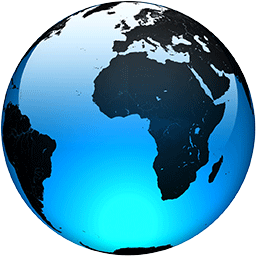
The Sabra of the future: Imagining life in Israel 77 years from now

“What we call the metropolitan of Tel Aviv stretches between Ashdod and Netanya today. When we hit the 40 million people mark, the entire coast will be built on, from Ashdod to Haifa.”
Consider the shore of Tel Aviv – the first Hebrew city, where Atarim Square is today, and the site where the Machlul neighborhood once stood.
Any new immigrant looking to rent an apartment in Tel Aviv today would be envious to learn that 1920s olim were invited to build makeshift huts from discarded planks and enjoy lifelong sea access – without paying taxes or getting a building permit. This is why Yiddish speakers called it the khap-lap (haphazard) neighborhood.
-*How will Tel Aviv, and the country, expand in the years to come?*-
“Israel has doubled its population every 30 years. If this continues, six decades from now there will be 40 million people living here,” Danielah Possek, head of the Bezalel Academy of Art and Design’s Urban Design Program, told The Jerusalem Post.
“What we call the metropolitan of Tel Aviv stretches between Ashdod and Netanya today. When we hit the 40 million people mark, the entire coast will be built on, from Ashdod to Haifa,” added Yoav Lerman, founder of Planet Institute for Connected Cities.
Lerman noted that the founders of the Yishuv also built along the coastal plain, as “it is easier to build there.”
The Jerusalem light rail. (photo credit: Chaim Goldberg/Flash90)
“People gave up on the idea that the car, or the Internet, can replace cities. Even COVID-19 did not kill the city. As long as people have a body and not a virtual avatar, they need to be comfortable when they walk around,” he pointed out. This means shade-giving trees and plenty of options to get around on foot or by public transportation.
For Lerman, the point isn’t whether the country will have 40 million people living in it or not, as this is the population of Tokyo now. So it is possible to maintain an urban community of this size even today.
The real issue is whether those who will manage these Israeli urban sprawls of the future will resemble Japanese managers in their efficiency.
When British colonial governor Claude Jarvis ruled the Sinai Desert, the British Empire did not want to allow those living under it a say in how things were done, he explained. When Israel was established, Jerusalem copied London and likewise took the reins.
This imbalance between local government and the capital might have worked in the sparsely populated Israel of the 1950s, but now it is ineffective and unsustainable.
“We don’t need to be like the Japanese,” Lerman said, smiling. “It would be enough if we resembled the Dutch. We lead the world when it comes to the Iron Dome, but when it comes to public transportation, we improvise.
“This poverty is not due to lack of money; it’s because we lack [management] abilities,” he concluded.
LESS THAN a century ago, the largest Jewish city in the world was New York, with Warsaw being second. Today, most of the world’s core Jewish population resides in Israel.
This is an immense, and perhaps unexpected, responsibility heavy on the shoulders of future Israelis.
“As a Holocaust survivor who saw the 1967 Six Day War, I have some perspective. Yet what I see today is unprecedented,” Sergio Della Pergola, one of Israel’s leading demographers, told the Post.
“A generation ago, I thought Jews would become a minority here; I was mistaken. What we actually see today is that there is no growth gap between Arabs and Jews. My prediction changed into one of parallel growth [of Arab and Jewish populations].
“With the US shifting away from its European identity and becoming less white, it is also expected to become more alienated to Jewish history,” he said.
“The State of Israel is the axis on which the fate of the Jewish people now turns, and in Israel everything can happen. This is why I worry,” he sighed.
For architect Michael Jacobson, who is about to release a study about Israeli memory and the country’s monuments, history is intimately linked to landmarks.
Pointing to the Jerusalem neighborhood of Ramot Polin, designed in the 1970s by Zvi Hecker in a bold modernist style, Jacobson noted how its haredi (ultra-Orthodox) residents care little for Hecker’s vision and have since modified their homes to suit their own needs.
“As the haredi and Arab communities are expected to grow, we are likely to see a diminished concern for monuments and national memory,” he explained.
Jerusalem, Possek told the Post, is “the focal point where the challenges of maintaining a healthy society, dealing with climate change, population density, infrastructure, and sustaining a thriving economy are accumulated and tested.”
The Talmud teaches that Jerusalem was once famous for its cinnamon trees. The bark was used to make the incense offering in the temple and to stoke a fragrant fireplace at people’s homes.
The Roman Empire brought pine trees to Jerusalem, just as centuries later the British Empire brought the eucalyptus to this land.
“If you want a true Jerusalem native tree, visit the Mamluk [Mamilla] Cemetery and look at the Atlantic Pistachio there,” Amir Balaban, who teaches sustainable urban design at the Bezalel Academy, said in an interview.
A native tree, Balaban pointed out, doesn’t need humans. A bird casts its seed, it finds water on its own, and it sustains insects and other living beings in an invisible web of relationships we have only just now begun to understand. “When you bring in trees, like the blue-leafed wattle,” another British import from Australia, “you create a lot of damage to this web of relations,” he emphasized.
When asked about the Jerusalem rivalry with Tel Aviv, he laughed and said that, in Tel Aviv, “they like fancy trees like the Burma creeper.”
“There is nothing wrong with that, as long as you do it with some control.”
IN A REGION where empires ruled and faded, and the future of any nation is linked to memory, notice the Ugdat Haplada (Steel Division) monument, said Jacobson. Designed and built in the 1970s by Israel Goodovitch, the monument was first erected in the Sinai city of Yamit, where it stood at the main square, honoring the IDF soldiers who in 1967 died fighting the Egyptian army in northern Sinai.
When Yamit was demolished and its population moved, the monument was relocated. It now stands near Kerem Shalom, cut off from the site for which it was created.
As the memory of the Six Day War fades, and with it, the set of values it embodied, the monument – once featured in Life magazine – now seems to have been completely forgotten.
One wonders if, 70 years from now, the threads that weave Israeli memory will still be relevant for Rabin Square. Perhaps its name will be changed to mark yet another page in the unknown history to be written.
Time changes things. When he spoke with The Palestine Post in 1934, Jarvis, the British governor, fumed at the black goat and the camel, claiming that they “aid the Arab in his path of destruction.”
Since then, the status of both animals has somewhat improved.
The black goat is now recognized for its grazing, which prevents forest fires. The camel gets credit for helping acacia trees grow in the Negev desert, as it has a digestive tract that consumes acacia fruits without damaging the seeds inside.
Jarvis was mistaken, and when we plan our future, there is no need to cling to a rigid mindset of a long-gone empire.
It is possible to plant a few cinnamon trees on the mountains of Jerusalem or offer water to Negev Bedouin who keep camels.
“Thanks to a 15-year-long initiative by the Environmental Protection Ministry to map local nature and learn how it works without us, our cities will be well adapted to the future,” Balaban, the urban design academic, said. ■
